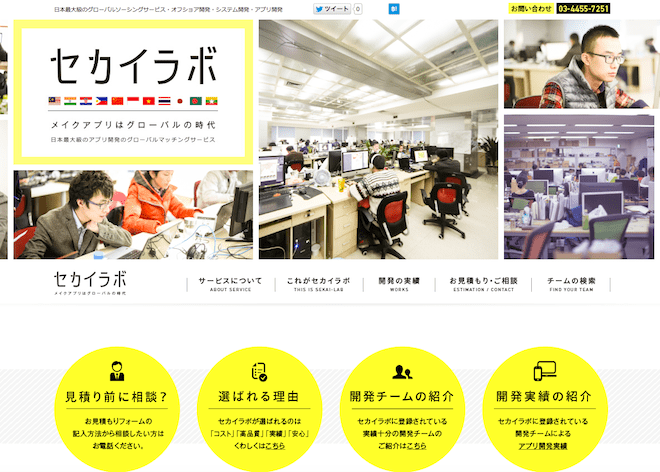
I previously wrote about Honda’s RoadMovies, a very clever little app that lets you compose short 24-second montage videos by stringing together smaller bite-size clips. I confess, I rarely get excited about mobile video apps, and I’ve yet to bother much with platforms like Vine or any others. But I do like the RoadMovies creation process. It’s one of the few mobile video services that I think offers real value, for me at least.
So I was pleased when I heard about Mechika Boola, a new app released just last week on iOS and Android that offers a very similar video composition process – but with a number of notable differences. The first oddity is the name, which I thought sounded a little familiar for some reason, but I couldn’t put my finger on it. Kazuhiro Naya, the CEO of Glue-th Inc , the company that makes the app, explained it to me:
The name comes from the Cinderella story (link). It is a magic spell to turn a miserable girl into a beautiful princess. Each shot recorded by this app may not be so beautiful. But the 15-second-movie edited by this app is always beautiful. This app is to turn your ordinary life into an extraordinary one, like Cinderella magic!
Like RoadMovies, you assemble short video clips to make longer compositions. In this case you stitch together six two-second clips to make a 15 second movie. The advantage over RoadMovies here is clear, with drag-and-drop clip re-arrangement possible if you need it, an action that resembles the icon rearrangement in iOS.

There’s also a handy feature that lets you customize the fade-to-black end title screen with a short text-based message. This improves on a big annoyance that I experienced with RoadMovies, which just tacks on the date automatically to movies.
You can also add visual filters and music as you can in RoadMovies, but here the selection of music is wider with 50 original songs to choose from and plans to add 10 to 20 more every month. I confess, I still like the high quality of the music available in RoadMovies, so I don’t really see that as an area where Honda’s app is lacking. But the variety in Mechika Boola is good to see.
Where Mechika Boola really stands out, however, is in its use of stamps/stickers. Stickers have been primarily a mobile photo trend to date, so it’s really interesting to see them used for video in a manner that does not suck. Because each ‘sub-clip’ is just two seconds long, you have a clearly pre-defined time period that your sticker will be on screen, so you don’t have to bother with start and end points for when your sticker is visible in the video. Stickers can be resized and repositioned too, but the delete sticker ‘x’ button is not always the easiest to execute (or at least, me and my fat fingers had difficulty with it).
There are more than 200 stickers currently available to use in the app, giving you lots of fun options to play with.

I’m told that the company will be focusing on user growth for its first two years, but one aspect of their business model will eventually be to sell premium stickers and music. Given the success that Line has seen with that model, and the fact that consumers in Japan are accustomed to such purchases, this makes a lot of sense.
So far my own experience with Mechika Boola has been largely positive, but given that it’s such a young app, there are still a few wrinkles that need to be ironed out in my view. There are a lot of default settings that are set to favor the company instead of the user. For example, Facebook sharing is on by default, ‘share to public timeline’ is on by default , and ‘save video in high quality’ is turned off by default. Overall the experience shows a disregard for first-time users that is very unsettling to me. But once you figure out where the hazards lie, you can easily navigate around them. Thankfully, when speaking to Kazu about my own concerns, he was pretty considerate and noted that they’re actively listening to user feedback in these early days.
A surprisingly quick start
For an app that has been online for such a short time, I was really surprised to see how active the platform was. Some of the users on Mechika Boola have over 6000 followers, and that really puzzled me. How did they get so many users so fast? Kazu attributes the apps fast growth to a partnership his company has with Asahi Broadcasting Corporation to feature their app in a weekly late-night television show called Gya Movie Sharing. The show will broadcast until the end of March, and so far it has really given the app a boost, says Kazu:
It has dramatically helped Mechika Boola grow so fast and the daily downloaded number is more than 15,000 and the number has been increasing day by day. […] More than 2,000 videos have been daily created and the number has been increasing day by day.
Those are impressive figures, but it remains to be seen whether the app can sustain its growth beyond the span of this television feature and eventually make a profit for the company. The limited video app offerings on both iOS and Android will likely ensure that it remains at least somewhat visible in the ‘Photo & Video’ category on iOS and in the ‘Media & Video’ category on Google Play. But we’ll have to wait and see how it fares.
Glue-th is currently a ten-person team, and I understand they will be looking to raise funds this April. If you’d like to try their app out for yourself, you can pick up Mechika Boola for free over on the App Store or on Google Play.



































































